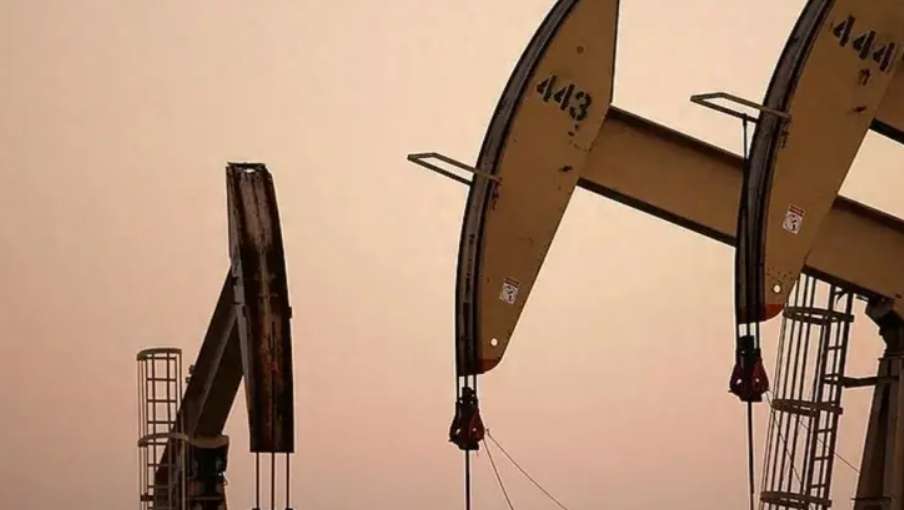Oil Prices Drop: Premium Risks of Crude Oil QDII
Advertisements
As the global market continues to grapple with fluctuating crude oil prices, recent reports indicate that despite ongoing supply cuts, the price of oil has been on a downward trend. This paradox poses a complex challenge for investors, political stakeholders, and consumers alike, as they navigate the implications of these price movements.
As of December 12, futures for light crude oil were hovering above the $70 per barrel mark on the New York Mercantile Exchange. However, just days earlier, on December 7, prices had dipped below this critical threshold. The latter part of the year saw a troubling series of consecutive declines in oil prices, including both West Texas Intermediate (WTI) and Brent crude, which experienced five consecutive daily losses by the end of November.
The ramifications of this decline have begun to impact the financial performance of numerous exchange-traded funds (ETFs) focused on oil investments. By December 8, many oil-themed QDII (Qualified Domestic Institutional Investor) funds showed a degree of value retracement over the past three months. Despite this downturn, some aggressive investors chose to enter the market, but warnings about potential losses from inflated prices were communicated by several fund managers, including those managing the Yifangda Oil fund.
Oil Fund Advisory on Premium Risks
In a surprising twist, the decision by OPEC+ to cut production did not lead to an anticipated rise in oil prices. Instead, the market reacted negatively, with prices falling below $70 per barrel for a time. Although recent rebounds have pushed prices back above this level, they remain significantly lower than at the end of September. This decline raises questions about the efficacy of OPEC’s actions, especially given internal disagreements within the organization regarding production quotas.
Investment opportunities within the realm of international oil are accessible through a variety of publicly offered oil-themed QDII funds, such as Yifangda Oil, Guangfa’s Dow Jones Oil Index, and Huabao Oil and Gas. Over the past two years, many of these funds yielded substantial returns for investors. However, the volatility seen in their net asset values in recent months has raised alarm bells.
According to data from Choice, by December 8, three of the oil-themed QDII funds reported negative returns, while three others managed to remain positive. Across the board, the past three months have seen varying degrees of decline, with losses reaching up to 15% for some. The differing structures of these funds—some linked to overseas oil ETFs and others tracking various oil indices—has resulted in disparate performance outcomes among them.

Between 2021 and 2022, oil-themed QDIIs experienced remarkable growth, with several funds surpassing a 50% increase in net value over the annual period. Even those with slightly lesser performance still reported over 30% gains. Notably, individual investors form a significant portion of these funds’ ownership; for instance, Yifangda Oil saw a 100% share of personal investors at mid-year 2023, while multiple other QDII funds also reflected over 90% individual investor participation during the same period.
In terms of market structure, oil-themed QDIIs are structured as Listed Open-Ended Funds (LOFs). This allows for a degree of flexibility; however, significant short-term declines in their off-market NAVs contrast sharply with persistent enthusiasm from some investors on the secondary market, driving prices upward. For example, on December 11, Yifangda Oil issued a premium risk alert, indicating notable fluctuations in its trading price as of December 7, with its NAV being reported at 1.1123 yuan against a market closing price of 1.427 yuan on December 11.
This raises significant red flags for investors who might invest blindly in high-premium shares, potentially exposing themselves to severe losses due to market inefficiencies. The level of caution expressed is echoed by other fund managers, including those at the Jia Shi Oil fund, which also released warnings concerning substantial deviations between market prices and NAV.
What Lies Ahead for Oil Prices?
The uncertainty in global crude oil prices has sent ripples of anxiety among investors, leading to critical questions about future trends. With economic indicators and seasonal demand potentially impacting market shifts, the outlook for oil prices in 2024 remains under scrutiny.
The management at Nuon Fund recognizes that while OPEC+ called for a meeting on November 30, the increasing discord among its members complicated the decision-making process. This internal strife contributes to skepticism regarding the group’s effectiveness in boosting oil prices through production control, especially since recent agreements included only voluntary cuts and lacked firm quotas that have historically provided market stabilization.
Industry experts predict that the trajectory of oil demand next year will be influenced by broader economic conditions, including a possible deceleration in global economic growth. Combined with market concerns surrounding supply, there is an expectation for subdued oil prices in the first half of 2024, with potential improvement in the supply-demand balance later in the year.
Yuan Shuai, Deputy Secretary-General of the Zhongguancun Internet of Things Industry Alliance, noted that uncertainty surrounding international oil pricing persists, with factors such as market supply, demand dynamics, and global economic conditions playing significant roles in shaping future trends.
Yang Yang, Assistant General Manager of the International Business Department at Huabao Fund, echoes optimism amid current uncertainties, suggesting that tightening supply coupled with improved demand could present renewed opportunities in the oil and gas sectors. However, the looming threat of a potential economic downturn in the U.S. may exert pressure on oil prices, though recent data indicates a diminishing likelihood of such a recession.
Long-term strategies will need to emphasize energy transition as a sustainable solution to address the global energy crisis. In this context, China’s leadership serves as a critical benchmark. As the world pivots towards renewable energy sources, traditional energy prices could remain elevated until alternative supply sources gain traction. Investment strategies should focus on identifying prospects in the midst of structural price fluctuations while remaining vigilant about the risks posed by structural changes in supply.
post your comment